Posted by Elena del Valle on July 17, 2015

Volunteer Vacations
Photo: Independent Publishers Group
Are you tired of going on vacation to the same place every year? Do you yearn to do more than just lounge on the beach every day during your getaway? If so a different kind of break might appeal to you. Every year people dedicate their free time to worthy causes and many of them pay for the privilege. Some are families traveling together, others are seniors with time to spare, and many are people with few or many skills seeking a way to make a difference on their time off from work.
In Volunteer Vacations: Short-Term Adventures That Benefit You and Others, 11th Edition (Chicago Review Press, $18.95) Doug Cutchins, Bill McMillon, and Anne Geissinger share an extensive list of 150 organizations offering such volunteerism opportunities. The 431-page softcover book published in 2012 includes a foreword by Ed Asner.
The book provides some basic information about voluntourism, the work and vacation combination. Each listing profiles the organization, its mission, projects, year founded, number of volunteers in the previous year, work they do, locations, costs, duration, and type of skills they seek. There are also short descriptions from past volunteers about their personal experiences on a project.
The charitable organizations in the United States and abroad are diverse and host travelers for a variety of projects and lengths. Vacationers can participate in projects such as searching for sea turtle nests in Greece or Taiwan, for example, or teaching English in a remote village.
When the book was published McMillon was a freelance writer for Odyssey magazine. Cutchins was director of service and social commitment at Grinnell College, and Geissinger was a part-time photographer.

Click to buy Volunteer Vacations
Comments:
Filed Under: Books
Posted by Elena del Valle on June 26, 2015

The Cayman Edge
Photos: cover Alex Nereuta, author Hans van der Post
Investors looking for opportunities that don’t follow the mainstream market trends sometimes choose independently managed private funds. That is one reason to buy into an offshore fund. Diversity is another, according to Gordon Casey, managing director of hedge fund consultancy Front Shore.
“While everybody is hoping for returns that are higher than the market, the truth is that there is great value in having an investment that is completely independent from the regular investment options,” Casey said by email when asked about the advantages of Cayman Islands investments.
“Diversity is a goal in and of itself and that’s the main reason. Having said that, fund structures in the Cayman Islands are used for many other purposes – including the structuring of private funds only intended for a very small group of people who want to invest together, family funds where all of the assets owned by a family are put into the fund structure and the family heirs, as such, are given shares in the fund. And lastly, for people who live in geographic areas with strict exchange controls but have made substantial gains internationally and do not want to repatriate their funds yet, a fund offers an efficient way to invest those gains outside of their core business – whether for private, corporate or family planning purposes.”
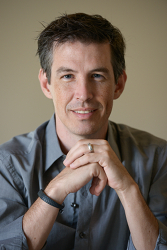
Gordon Casey, author, The Cayman Edge
In The Cayman Edge How to Set Up a Cayman Edge Fund (OneWord Publishing, $19.99), a 169-page softcover book published in 2014 he discusses the subject in detail. He wrote the book for fund managers wishing to setup a fund in the Cayman Islands, although he also hopes it serves as a useful tool for students of finance seeking information about the hedge fund industry in general, and new entrants to the industry who want to get a head start. The book is illustrated in color and divided into 18 chapters, two introductions and eight appendices.
“When I entered the industry in 2001 there was very little in the way of guides or literature on funds, and these days you can find everything online but it’s scattered across the websites of industry organisations, law firms, administrators and general interest articles,” Casey said. “The book is an attempt to consolidate all of the information (with pictures!) into one place – the book that I wish I had been given when I first started and a book that I can continue to use as a reference tool myself.”
While many of the more successful funds require a minimum of one million dollars to start, the most common funds require a minimum investment of $100,000, he explained by email. In the book, he describes six types of funds and seven service providers. Casey has been running Front Shore since 2004.

Click to buy The Cayman Edge
Comments:
Filed Under: Books
Posted by Elena del Valle on June 12, 2015
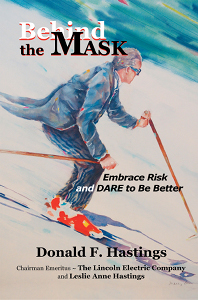
Behind the Mask
Photos: Xlibris Publishing
Before retiring Donald F. Hastings led international conglomerate The Lincoln Electric Company out of a severe financial crisis into record sales and profits. He is convinced his success is due to unexpected strategies of sharing the risk, respect and wealth with all employees.
In Behind the Mask: Embrace Risk and Dare to Be Better (Xlibris Publishing, ) a 207-page softcover memoir penned by his daughter Leslie Anne Hastings, he discusses his career path, shares his opinions about good management strategies, and challenges the modern views of corporate America. They wrote the book for “anyone who is struggling with a person or situation in his/her life that seems insurmountable. There is always a solution.”
“I may be David goading Goliath, but I believe layoffs, in general, are a sign of catastrophic failure on the part of management,” Hastings said in a press release. “To please Wall Street, we are dehumanizing business to a point that is unconscionable. It’s lazy and it’s bad business. I believe human beings are the single greatest resource a company has,” Hastings said. “Of course there’s a risk in taking care of your people, but being creative and taking risks is what inspired management is all about!”
When asked what the biggest surprise from the publication of the book was Leslie Anne said by email, “That the book was so well received on so many levels. Most people read the book in one sitting! Everyone who reads it takes away something different- from ideas and philosophy to courage and humor. It’s a really fun read!”
Before retiring Donald F. Hastings led international conglomerate The Lincoln Electric Company out of a severe financial crisis into record sales and profits. He is convinced his success is due to unexpected strategies of sharing the risk, respect and wealth with all employees.
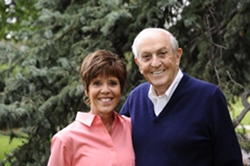
Donald and Leslie Anne Hastings, authors, Behind the Mask
According to his biography, Hastings, chairman emeritus, The Lincoln Electric Company, was dubbed the Silver-Tongued Mesmerist by his customers. Leslie Anne Hastings, a graduate of Stanford University, was the voice Behind the Mask.
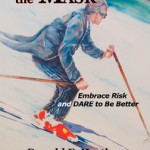
Click to buy Behind the Mask
Comments:
Filed Under: Books
Posted by Elena del Valle on May 29, 2015

Going for the Gold
Photos: News & Experts
The more debt our country accumulates the more money it needs to pay the bills. The economy has been poor and the government’s solution increasingly has been to print new money with no collateral to back it up, leading many to believe the situation will worsen in the coming years. The deterioration will force our government to offer less to its citizens and charge them more in the form of taxes to pay the accumulated and growing debt, says William A. Storum, J.D., author, Going for the Gold Preserving Wealth, Lowering Taxes (Book Publishers Network, $21.95).
As that happens our currency will loose its worth to inflation; so will other so called hard currencies that have traditionally been considered safe havens, the author says in the book. He believes one way to protect our assets from the devastating losses such shifts would bring is to invest in gold. Given the limited supply of the precious metal many rely on it for the possible proverbial rainy day when the economy collapses and paper money becomes worthless.

William Storum, author, Going for the Gold
Storum points to many examples of economies falling on difficult times and countries with worthless currencies. He illustrates a period in our history in the last century when our government made owning gold by private citizens illegal, forcing people to sell their gold to the government and earning a profit on the difference a year later. He suggests strategies to accumulate gold bullion and invest in gold stocks and instruments in tax smart ways in order to safeguard our savings in case financial disaster strikes.
The 307-page softcover book was published in 2014. The author is an orchardist in California. He has inactive California Bar Association and California Board of Accountancy inactive licenses. There was no contact information on his book website.

Click to buy Going for the Gold
Comments:
Filed Under: Books
Posted by Elena del Valle on May 1, 2015

Photo: BenBella Books, Inc.
Do you prefer to eat vegetarian foods? Did you read The China Study (see Health, nutrition experts examine comprehensive China nutrition study) and Whole (Nutrition expert, educator discuss whole food plant based diet advantages) which outline the healthful advantages of plant based and whole diets? Do you have limited time to cook? If so, The China Study Quick & Easy Cookbook: Cook Once, Eat All Week with Whole Food, Plant-Based Recipes (BenBella Books, $19.95) by Del Sroufe may appeal to you.
The 253-page trade paperback book, edited by Leanne Campbell, PhD and published this year, is chock full of color photos by Robert Metzger in varied sizes. It is divided into sections by type of dish: Breakfast Dishes; Sauces, Salad Dressings & Seasonings; Snacks & Spreads; Salads; Sandwiches; Pasta & Baked Dishes; Soups; Entrees; and Desserts.
A short Appendix has Measurement Guide, Dietary Symbols and Nutritional Value information. At the end of the book there is an offer to sign up for a free digital copy (in Kindle, PDF or ePub) of BenBella’s Best of Plant Based Eating. All that was necessary to receive a copy was to provide a name and email address and verify the email address after receiving a confirmation email from the publisher.
Sroufe is also author of New York Times bestselling Forks Over Knives: The Cookbook, and Better Than Vegan. Campbell is author of The China Study Cookbook.

Click to buy The China Study Quick & Easy Cookbook
Comments:
Filed Under: Books
Posted by Elena del Valle on April 17, 2015
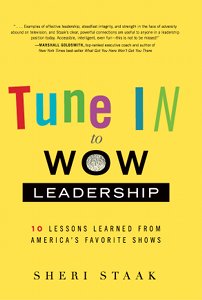
Tune in to Wow Leadership
Photos: Smith Publicity
Depending on their program preferences would be leaders and existing leaders who watch certain entertaining programs on television can accomplish two tasks at once, according to Sheri Staak. The sales executive, teacher and author of Tune In to Wow Leadership: 10 Lessons Learned From America’s Favorite Shows (Greenleaf Book Group Press, $24.95) believes larger than life fictional TV characters from well known programs such as House, The Office, The Simpsons and Dallas offer leadership lessons.
In her 225-page softcover book published January 2015 she highlights examples of fictional leaders from current and past shows to illustrate leadership concepts. She believes some “…TV characters can serve as role models…” She strives to help readers define their own leadership experiences through real world insights and fictional TV show character examples and comparisons.
Staak defines Wow leaders (in contrast to Dud leaders) as those who are confident, fearlessness, have positive energy, are bold decision makers and motivate others. She also says they are honest, trustworthy, humble, respectful, authentic, visionaries, goal oriented, seeking self improvement, good communicators, care about others, and are agents of change.
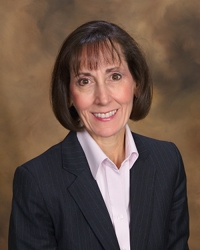
Sheri Staak, author, Tune in to Wow Leadership
“If you’re trying to instill motivation, deliver a call to action, or drive home a point, you must keep your platform skills sharp by preparing in advance–it can make or break your message,” said Staak in promotional materials for her book. “To be a Wow leader, you must have an acceptable level of platform skills. Your job is to inspire, motivate, and communicate effectively in order to lead effectively. Those to whom you present your ideas, directives, and visions are the same people you depend on to step up and push through barriers and challenges.”
Staak, a Chicago resident, has worked with and managed 1,000 sales executives while in working in leadership positions at large privately held and publicly traded global companies. According to her biography she has led businesses with more than $1 billion in revenue, worked with successful start ups and managed business turnarounds.
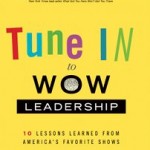
Click to buy Tune In to Wow Leadership
Comments:
Filed Under: Books
Posted by Elena del Valle on April 10, 2015
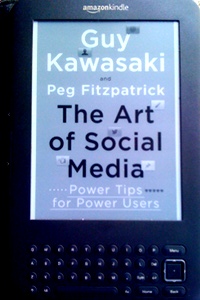
The Art of Social Media digital book first page
Photo: HispanicMPR
Using four or five words that explain what you are about and posting a simple photo that can blow up to a large size is best; as is picking a name that makes it obvious who you are. Try to create a profile that makes you seem competent, likable and trustworthy, says Guy Kawasaki, a believer in the business value of social media, about how business people should build their social media bio and avatar.
In his latest book The Art of Social Media: Power Tips for Power Users (Penguin, $12.99), written with Peg Fitzpatrick, he also says that everyone has a Facebook account, and that people have no choice when it comes to their business but to have a Google+ and a Facebook page. While he discourages paying for followers or likes and asking for shares he says it is fine to pay for Facebook promotions of posts and pages.
In particular, he and his coauthor discuss the ideas and methods they have tried. He recommends a vanity URL, implying that not having one “impugns your intellectual prowess.” Planning in social media is about finding a way to make money, success is measured by reshares of a post, and everyone wants more followers whether they admit it or not, he says in the book. To illustrate tips and suggestions he uses examples from his own businesses like Alltop and Holy Kaw as well as client projects for Motorola, Canva, and Audi he and Fitzpatrick worked on. An example of a project they both were hired for was a Motorola product launch in Latin America. A disclosure accompanies the tips in those cases.
The book is peppered with hyperlinks. The final chapter was dedicated to List of Apps and Service. The book describes social media channels as follows: Twitter for perception, LinkedIn for self promotion, Google+ for passion, Facebook to connect with others, and Pineterest for photos. Kawasaki had 6.4 million followers on Google+ in the summer of 2014, he says in the book. As of this writing he has 1.45 million followers on Twitter and followed 105,000 thousand. Fitzpatrick had 40,300 followers and followed 24,200 people on the same platform.
Kawasaki does work for Canva, an online, graphics design service. He is trustee of the Wikimedia Foundation, and executive fellow at the Haas School of Business at U.C. Berkeley. According to Fitzpatrick’s website she is an author, speaker and social media marketing pro.
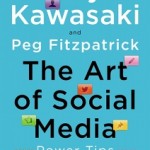
Click to buy The Art of Social Media
Comments:
Filed Under: Books
Posted by Elena del Valle on March 13, 2015
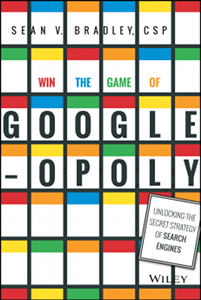
Win the Game of Googleopoly
Photos: Wiley, Bryan Taylor Johnson
Sean V. Bradley, CSP has made a career in automotive sales. When it comes to online sales he believes Google is king, dominating 67.5 percent of the market. He also believes it is essential to appear among the top ten results or the first page of results on Google. Because, he says, only five percent of people look at results beyond the first page, not being on that page is like not appearing at all.
He is convinced he has discovered search engine optimization techniques that will lead readers of his book Win the Game of Googleopoly: Unlocking the Secret Strategy of Search Engines (Wiley, $25) to Google success. The 249-page hardcover book published this year has 11 chapters where he outlines his SEO theories. The book directs readers to a book related website (it was down at the time this writing).

Sean Bradley, author, Win the Game of Googleopoly
Bradley is founder and chief executive officer of Dealer Synergy Inc. According to his bio, he has personally trained 10,000 automotive sales professionals, and has been hired by 1,000 multi-million dollar automotive dealerships.
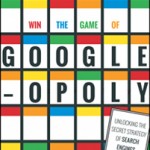
Click to buy Win the Game of Googleopoly
Comments:
Filed Under: Books
Posted by Elena del Valle on March 6, 2015
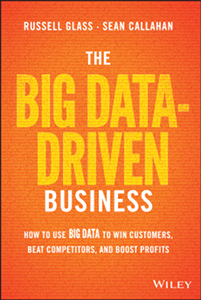
The Big Data-Driven Busines
Photos: Wiley
Marketers Russell Glass and Sean Callahan are big data fans. They believe big data “is changing and should change the way business functions.” They are convinced the benefits of data gathering and analysis are available to companies of all sizes and that every company is relying on them.
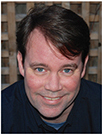
Sean Callahan, co-author, The Big Data Driven Business
In The Big Data-Driven Business: How to Use Big Data to Win Customers, Beat Competitors, and Boost Profits (Wiley, $30), a 214-page hardcover book published this year, they discuss the marketing advantages they believe it offers.
The book is divided into thirteen chapters in which the authors share the examples of Nate Silver, Copernicus, Apple and Blackberry to illustrate their point.

Russell Glass, co-author, The Big Data Driven Business
For the future they consider the following issues important: personalization, marketing measurement, mobile, Internet, privacy and security, product development, social media, content marketing and human intervention.
Callahan is a marketing journalist, and senior manager content marketing at LinkedIn. Glass is head of B2B Marketing Products at the same company.
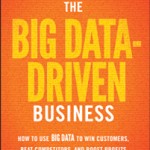
Click to buy The Big Data-Driven Business
Comments:
Filed Under: Books
Posted by Elena del Valle on February 27, 2015
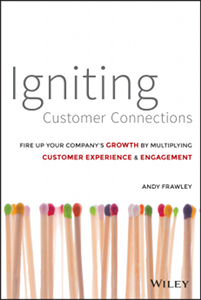
Igniting Customer Connections
Photos: Wiley
Andrew Frawley, president, Epsilon, has 30 years of marketing experience. He is convinced the old methods of marketing are behind us. He seeks to establish an emotional connection with customers and engage with them in “effective ways that achieve impressive repeatable results.”
Toward that goal he commissioned proprietary research.
The findings lead to what he calls Return on Experience x Engagement or ROE 2, an approach to produce profitable customer connections and measure marketing results. In Igniting Customer Connections: Fire Up Your Company’s Growth By Multiplying Customer Experience & Engagement by Frawley (Wiley, $28), published October 2014, he describes his ideas about marketing to build connections to match today’s technology and consumers.

Andy Frawley, author, Igniting Customer Connections
The 240-page hardcover book is divided into 21 chapters and three main sections. Part one, Connect with Your Customers Now, explains the approach and how it differs from the traditional return on investment concept. In ROE 2 Research and Insights he explains how it works, illustrating the research and interviews with executives. In An ROE 2 Primer, the third section, he discusses content, channels, measurement and segmentation, and technology as well as consumer privacy issues.
He believes marketers will require new analytical skills to take advantage of Big Data as the depth and breath of information expands. When it comes to consumer privacy, he suggests intelligent anonymity where a marketer has extensive information about a consumer without knowing who he or she is. He indicates in the book that best in class marketers don’t associate consumers’ individual information with cookies, and ensure consumer data remains only within the client’s possession. He proposes in Chapter 20 that marketers address consumer privacy with “transparency, knowledge, respect and responsibility.”
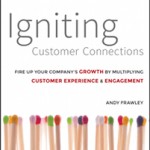
Click to buy Igniting Customer Connections
Comments:
Filed Under: Books





































